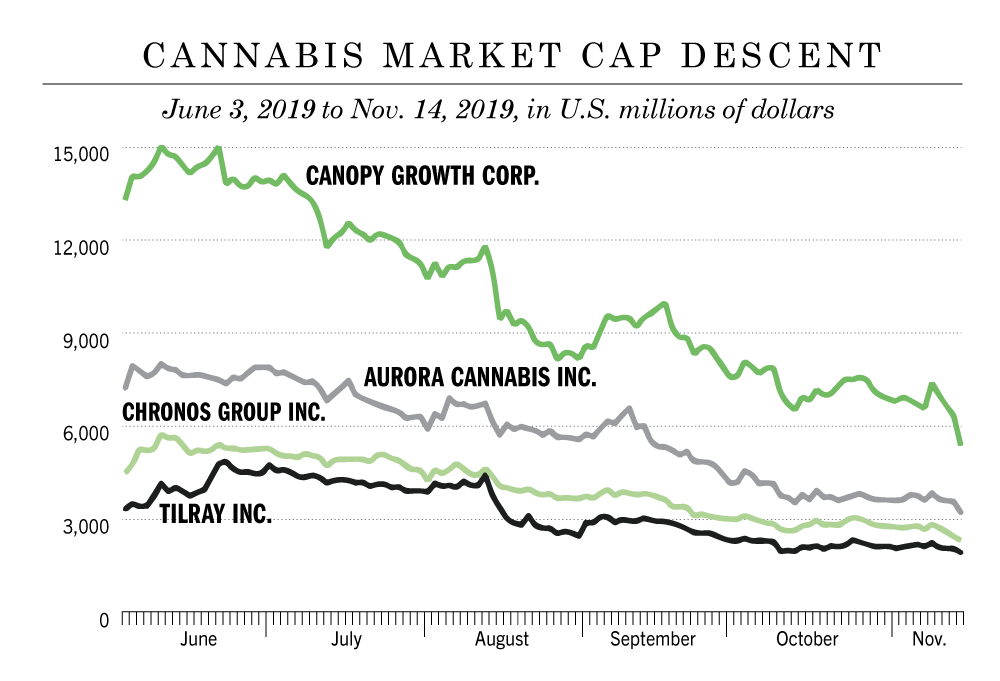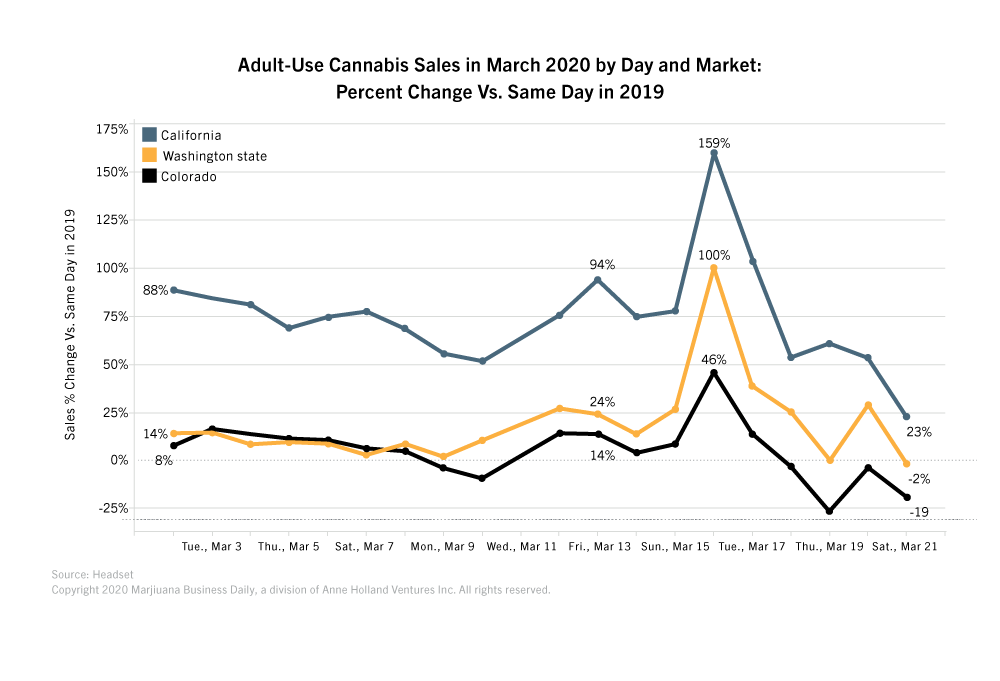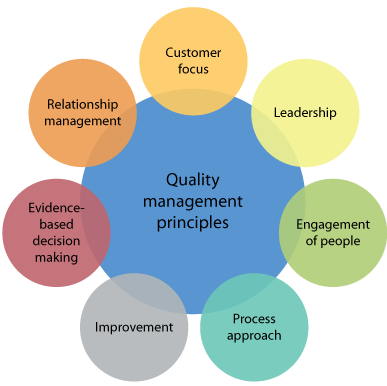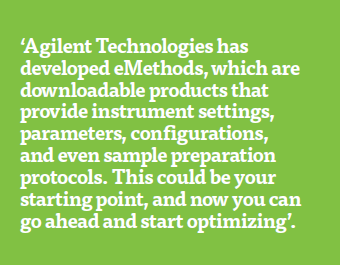
One of the most immediate misconceptions surrounding the cannabis industry today is that, with so many investors and fresh startups looking at the space, the sector must be a simple cash cow opportunity for businesses. For those wishing to capitalize, cannabis testing appears to be a relatively low-risk endeavor, as all products must undergo testing because of regulatory requirements and the potential profit margins within laboratory testing can be large. While cannabis testing is indeed profitable, new entrants to the scene should also be aware of common pitfalls that may disrupt less experienced operators.
New laboratories can begin by unpacking many of the misconceptions about the cannabis testing sector that are widely held by those outside of the industry. In examining this “Green Rush” rhetoric, operators can discover negative nationwide trends in the cost of testing and the availability of capital that might prompt a rethink of such a laboratory’s core business plan. It is also important for new operators to consider the trajectory of the future market, in light of the market disruption caused by the global coronavirus pandemic, and how this might affect financial support for the laboratory. Conversely, the treatment of cannabis businesses and ancillary services as “essential businesses” during the pandemic is an encouraging sign for the future growth of the legal cannabis industry.
Recognizing the importance of quality is one of the attitudes most central to avoiding common pitfalls in the testing industry. When setting up a laboratory, quality is often seen as a major cost center for the business, but it is vital that new laboratories do not cut corners here. Quality is more than just a regulatory requirement; it is something that can help laboratories run a better business. The notion of quality encompasses everything from equipment reliability, accuracy, and timeliness of results, to adequate staff training, reagent preparation, and method validation. By not compromising on these principles, laboratories can minimize the risk of errors, and strengthen their position in the industry and their reputation among potential customers.
As the cannabis testing industry matures, it will have to navigate an uncertain regulatory climate and a world in recovery from the effects of the coronavirus pandemic. As a result, the future of cannabis testing may include stricter audits, tougher regulatory enforcement, and more consolidation in an increasingly competitive industry. To be successful in such a climate, importance must be placed on expert personnel training, method development and validation, and intelligent laboratory workflow.
Green rush misconceptions
While cannabis testing is undeniably profitable, the industry has become increasingly commoditized. For instance, when cannabis regulations first went into effect in California in 2018, the cost of a compliance test was over $1000 USD. Given the extent of California law, normally eight or nine tests would be required to be executed. As of 2020, the cost of these tests has fallen to under $500 USD each. In such a short timeframe, a 50 percent drop in the cost of testing should concern new operators and must be kept in mind while calculating projected profit margins in a business plan.

Figure 1: Cannabis market cap descent. (Photo courtesy Bloomberg News)
Equally, operators should be aware of the large amounts of capital that are required to properly establish a cannabis testing laboratory – around $2 USD million. This is because the advanced equipment and specialized electricity, gas lines, and plumbing that such facilities require. Investors may be wary to provide such a large amount of funding while the cannabis market isin decline, though this is likely a much-needed market adjustment following initial over-inflation caused by the green rush. Having a solid business plan based on realistic financial projections is key to bringing investors on board in such a climate.
The cannabis testing industry is also likely to be impacted as a result of the coronavirus pandemic. Due to the federal prohibition of cannabis, cannabis businesses and ancillary services do not qualify for many of the federal financial aid programs being made available to other businesses during the pandemic. Federal law has also prevented many cannabis businesses from accessing banking services, resulting in a very cash-heavy industry. In turn, this has put cannabis businesses at an increased risk.
On the other hand, the designation of cannabis businesses as essential businesses in many US states during the coronavirus outbreak should be very encouraging to the industry. This growing acceptance of the industry from legislators is already leading to more collaboration and a more nuanced conversation on the matters of regulation, taxation, and compliance testing. As regulators’ understanding of the sector improves, so too will the amount of audit and accountability in the sector to better address illegal and non-compliant operators.

Figure 2: Changes in adult-use cannabis sales, 2019 vs 2020.
(Photo courtesy Marijuana Business Daily)
In terms of concrete steps to address these green rush misconceptions that new operators may hold, self-awareness is key. No lab will be able to address every single issue in the industry and dominate a market share. By having this self-awareness and focusing on individual laboratory strengths – whether that is a team with PhD-level scientific training, outstanding customer service, smart partnerships with equipment vendors, or separate R&D capacity – new laboratories will be able to stand out and thrive in this competitive space, even during uncertain circumstances such as these.
Quality management systems
A proper quality management system is central to a good cannabis testing laboratory, and if implemented well it can inf luence the way in which the whole laboratory is run. Good quality management will result in high-quality traceable data, that can be easily defended during audits and easily assessed should any complaints arise. More than just a way to satisfy regulatory requirements, quality management should be a continuous effort to review how documentation is prepared and traced, how errors can be reduced, and how testing processes can be improved.
Having a good laboratory information management system (LIMS) can go a long way in improving quality management. The best LIMS systems can tie together all traceable actions in a laboratory – who has worked on a sample, how was it prepared, how was that method validated, what batch was the sample from, what were its test results, etc. – and all other relevant customer information to reduce risks and sources of potential error, and result in a fully transparent and traceable chain of custody for every sample. In the event of a complaint, the testing data will be fully visible to examine where improvements could be made.

Figure 3: Quality management principles.
(Photos courtesy ASQ)
In a laboratory with poor quality management, there are many potential sources for error. Understaffing and undertrained staff can be a very common issue, and where there are many more samples than adequately trained technicians, errors are more likely to be made through time pressure, excessive workload, and poorer attention to detail. Hiring adequate technical staff and implementing good staff training programs can combat many of these issues. Similarly, so too can establishing a routine procedure for multi-step verification, such as requiring multiple people to review and sign-off on completed tests.
Transparency about such verification and continuous improvement can greatly improve customer confidence and trust in the testing sector. At present, there is a significant gap between the customer and laboratories as far as trust is concerned. Therefore, customers shop around for laboratories that will reward them with the highest potency readings. With good quality management, laboratories can work with customers to shift that conversation and drive home the importance of risk management, reliability, and high-quality data. Laboratories can stand out by promising a less risky option for customers by demonstrating their commitment to transparency and continual improvement.
Laboratories can also help to establish customer trust through involvement with one of the many efforts to create consensus methods on cannabis testing, run by organizations such as ASTM International and AOAC International. Such efforts can propel the industry towards better standardization of analytical procedures and create a level playing field for all in the sector.
In the future, the cannabis testing industry will have to face both an uncertain regulatory climate and an uncertain business climate. Many states will be cautious to make drastic changes to legislation during the 2020 election year in fear of possible political consequences, and the need to prioritize dealing with the coronavirus pandemic is likely to sideline other smaller changes for the time being. The pandemic has also tightened the capital market, presenting an additional challenge for new operators.
For laboratories to stay ahead of the curve and ensure success, it will be important to focus on individual assets. Hiring, training, and retaining talent can make a large difference to a laboratory, and so operators should consider what benefits they can offer which might help attract experienced technicians and scientists to their laboratory rather than the traditional pharmaceuticals market, such as a 401(K) and good healthcare benefits.
Analytical method development is also of central importance. There are no easy short cuts to optimizing a good method; instrument vendors can provide good tools and methods as a starting point, but laboratories should be prepared to customize these further to perfectly suit the workflow and capabilities of their facility. On a similar note, laboratories should also examine their overall workflow. On a physical level, it can help to consider the movement of samples through the laboratory. Does it start and stop too frequently? Are there any bottlenecks that need addressing? Are there adequate checks and balances in place? Sample management can be a common bottleneck in this process. Using a good LIMS and compatible software, and possibly also the application of robotics, can help to automate this process while also improving traceability and reducing risk. Any point where manual input can be reduced will also subsequently minimize errors.

Cannabis is an incredibly complex and dirty matrix, so laboratories would also do well to optimize their sample preparation methods for each different matrix they handle – tackling cannabis flower will be drastically different to tackling an infused candy. Scientific literature can suggest good starting points for this, but, like every other laboratory method, the exact parameters and workflow should be further optimized to suit each unique testing laboratory. Using internal standards and spiking experiments can be an easy way for laboratories to evaluate relevant matrix interferences.

Figure 4: An example laboratory workflow (Photo courtesy Dr. Sweatha Kaul, Ph.D.)

Figure 5: An Agilent 1260 Infinity II binary LC with multisampler (left) and Agilent 6470 triple quadrupole mass spectrometer (right)
Finally, it is necessary for laboratories to consider their choice of analytical instruments. Analytical chemistry will never be plug and play and it is crucial that all operators recognize the sensitive and highly configurable nature of analytical instrumentation. The role of any analyst is to ensure they are running the optimum configuration for the task at hand and customize off the shelf solutions to meet the specific needs of their lab. A good example of this was the rush to produce a single method LC-MS solution for pesticide analysis to meet California state regulations. Many experienced operators quickly found that this was impractical and inefficient and quickly shifted to adopting both liquid chromatography–tandem mass spectrometry (LC-MS/MS) and gas chromatography–tandem mass spectrometry (GC-MS/MS) methods in parallel to meet their customers’ needs. Using a fast, optimized single-stream sample preparation approach, a dual platform approach to pesticide testing in states like California is more efficient and offers three to four times the throughput compared to a single LC-MS/MS system and a faster return on investment.
Ultimately, instrument selection should not be about cost alone, you must consider cost of ownership and the support offered by the vendor. Servicing and the availability of practical support are key to minimizing instrument downtime. Every day lost whilst waiting for the support you need to reach your lab is bad for business and bad for your customers. To mitigate this risk, operators should consider instrument redundancy to allow for inevitable and essential downtime that comes as a result of maintenance, updates, running quality control checks and more.
As the sector progresses, laboratories may also look to distinguish themselves by becoming more involved in assisting R&D services and in building smart relationships with other operators and laboratories in key states, e.g. the Midwest.
There are a great many challenges that the cannabis testing sector will need to overcome in the coming years, including the ramifications of the global coronavirus pandemic. Despite this, the future remains promising for laboratories which hold true to scientific integrity and who will propel the emerging field to new heights.
Processes, workflows, and a robust quality management system will set laboratories apart from the crowd. For newer laboratories, there is no need to re-invent the wheel; lean on the expertise of vendors and scientists and collaborate with others to develop tailored testing solutions to suit your strengths and improve your weaknesses. With proper foresight and planning, these common challenges can be overcome, and energy can be focused on improving the sector for all who are involved in it, by working to build the levels of consumer trust in the field and by mounting a push for standardization. Through such collaboration, the industry will move forwards towards a bright future.